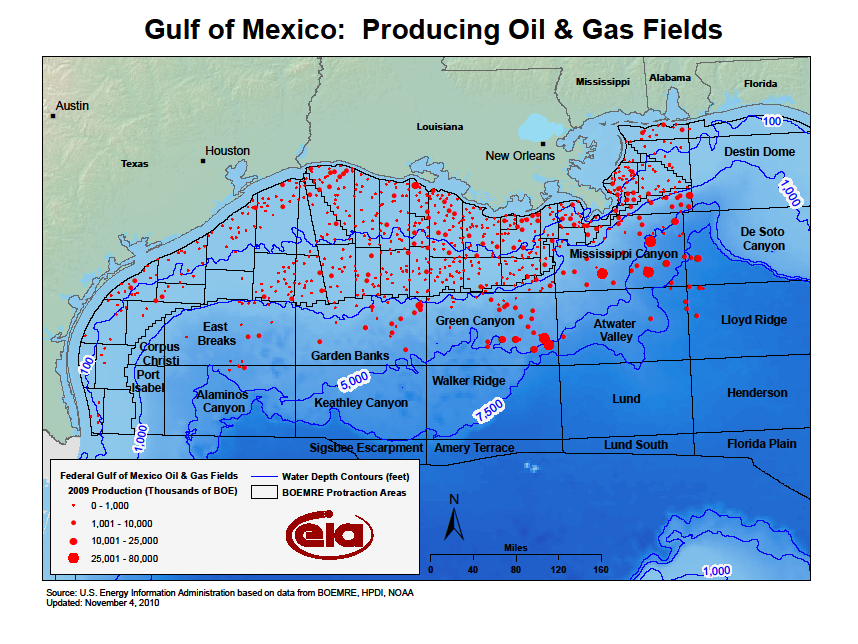Mississippi Canyon on:
[Wikipedia]
[Google]
[Amazon]
 The Mississippi Canyon is an
The Mississippi Canyon is an
Gulf of Mexico GLORIA geology interpretation
Page Contact Information: O'Malley, J., usgs.gov
Formation of the Mississippi Canyon, GCAGS Transactions, Volume 32 (1982) (from Abstract)
Coleman, J. M., D. B. Prior.
{{Deepwater Submarine canyons of the Gulf of Mexico
 The Mississippi Canyon is an
The Mississippi Canyon is an undersea canyon
A submarine canyon is a steep-sided valley cut into the seabed of the continental slope, sometimes extending well onto the continental shelf, having nearly vertical walls, and occasionally having canyon wall heights of up to 5 km, from c ...
, part of the Mississippi Submarine Valley in the North-central Gulf of Mexico
The Gulf of Mexico ( es, Golfo de México) is an ocean basin and a marginal sea of the Atlantic Ocean, largely surrounded by the North American continent. It is bounded on the northeast, north and northwest by the Gulf Coast of the United ...
, south of Louisiana
Louisiana , group=pronunciation (French: ''La Louisiane'') is a state in the Deep South and South Central regions of the United States. It is the 20th-smallest by area and the 25th most populous of the 50 U.S. states. Louisiana is borde ...
. According to the U.S. Geological Survey
The United States Geological Survey (USGS), formerly simply known as the Geological Survey, is a scientific agency of the United States government. The scientists of the USGS study the landscape of the United States, its natural resources, and ...
GLORIA Mapping Program, it is the dominant feature of the north-central Gulf of Mexico. According to GCAGS Transactions, it has an average width of , and a length of . The US Minerals Management Service
The Minerals Management Service (MMS) was an agency of the United States Department of the Interior that managed the nation's natural gas, oil and other mineral resources on the outer continental shelf (OCS).
Due to perceived conflict of inter ...
(MMS) applies the name Mississippi Canyon to numbered federal oil and gas lease blocks over a large offshore area centered on, but mostly outside, the submarine canyon.
Oil and gas exploration and production
According to "Deepwater Gulf of Mexico 2004: America's Expanding Frontier", a report issued by the Minerals Management Service (MMS) Gulf of Mexico OCS Region, of the ten deepwater discoveries in water depths greater than 7,000 ft (2,134 m), three were in the Mississippi Canyon area: Aconcagua project, area/block MC305, deep; and Camden Hills project, MC348, deep, both discovered in 1999; and Blind Faith project, MC696, deep, discovered in 2001. In a separate section of the same report, note is made of acreage in the Thunder Horse project, MC778, acquired in 1988. Other projects noted for Mississippi Canyon include Thunder Horse areas/blocks MC775-778 and MC819-822, listed as completed grid PEA (programmatic environmental assessment) by BP. An MMS list of 80 development systems of productive deepwater Gulf of Mexico projects from 1979 to 2003 includes 29 projects in the Mississippi Canyon area: Five of the top 20 deepwater Gulf of Mexico production blocks for 2000-01 were in the Mississippi Canyon, including the top 2: Project Mars, deep, of oil equivalent (BOE); project Ursa, deep, of BOE; project Mensa, , of BOE; Cognac, , of BOE; Crosby, , of BOE, all managed by Shell.''Deepwater Horizon'' explosion
On April 20, 2010, the ''Deepwater Horizon
''Deepwater Horizon'' was an ultra-deepwater, dynamically positioned, semi-submersible offshore drilling rig owned by Transocean and operated by BP. On 20 April 2010, while drilling at the Macondo Prospect, a blowout caused an explosion ...
'' drilling rig
A drilling rig is an integrated system that drills wells, such as oil or water wells, or holes for piling and other construction purposes, into the earth's subsurface. Drilling rigs can be massive structures housing equipment used to drill wa ...
, located in the MMS Mississippi Canyon block 252, which is about off the Louisiana
Louisiana , group=pronunciation (French: ''La Louisiane'') is a state in the Deep South and South Central regions of the United States. It is the 20th-smallest by area and the 25th most populous of the 50 U.S. states. Louisiana is borde ...
coast, suffered a catastrophic explosion; it sank a day-and-a-half later. Although initial reports indicated that relatively little oil had leaked, by April 27 it was stated by BP that approximately of oil per day were issuing from the wellhead
A wellhead is the component at the surface of an oil or gas well that provides the structural and pressure-containing interface for the drilling and production equipment.
The primary purpose of a wellhead is to provide the suspension point and ...
, below the surface on the ocean floor. The resulting oil slick
An oil spill is the release of a liquid petroleum hydrocarbon into the environment, especially the marine ecosystem, due to human activity, and is a form of pollution. The term is usually given to marine oil spills, where oil is released into th ...
quickly expanded to cover hundreds of square miles of ocean surface, posing a threat to marine life and adjacent coastal wetlands. On June 10, the Flow Rate Group from the ''Deepwater Horizon'' Incident Joint Information Center reported that they have determined that the estimated flow rate from the out of control well head has been to per day.http://www.deepwaterhorizonresponse.com/go/doc/2931/627011/
See also
*Offshore oil and gas in the US Gulf of Mexico
Offshore oil and gas in the Gulf of Mexico is a major source of oil and natural gas in the United States. The western and central Gulf of Mexico, which includes offshore Texas, Louisiana, Mississippi, and Alabama, is one of the major petroleum-pr ...
References
External links
Gulf of Mexico GLORIA geology interpretation
Page Contact Information: O'Malley, J., usgs.gov
Formation of the Mississippi Canyon, GCAGS Transactions, Volume 32 (1982) (from Abstract)
Coleman, J. M., D. B. Prior.
{{Deepwater Submarine canyons of the Gulf of Mexico